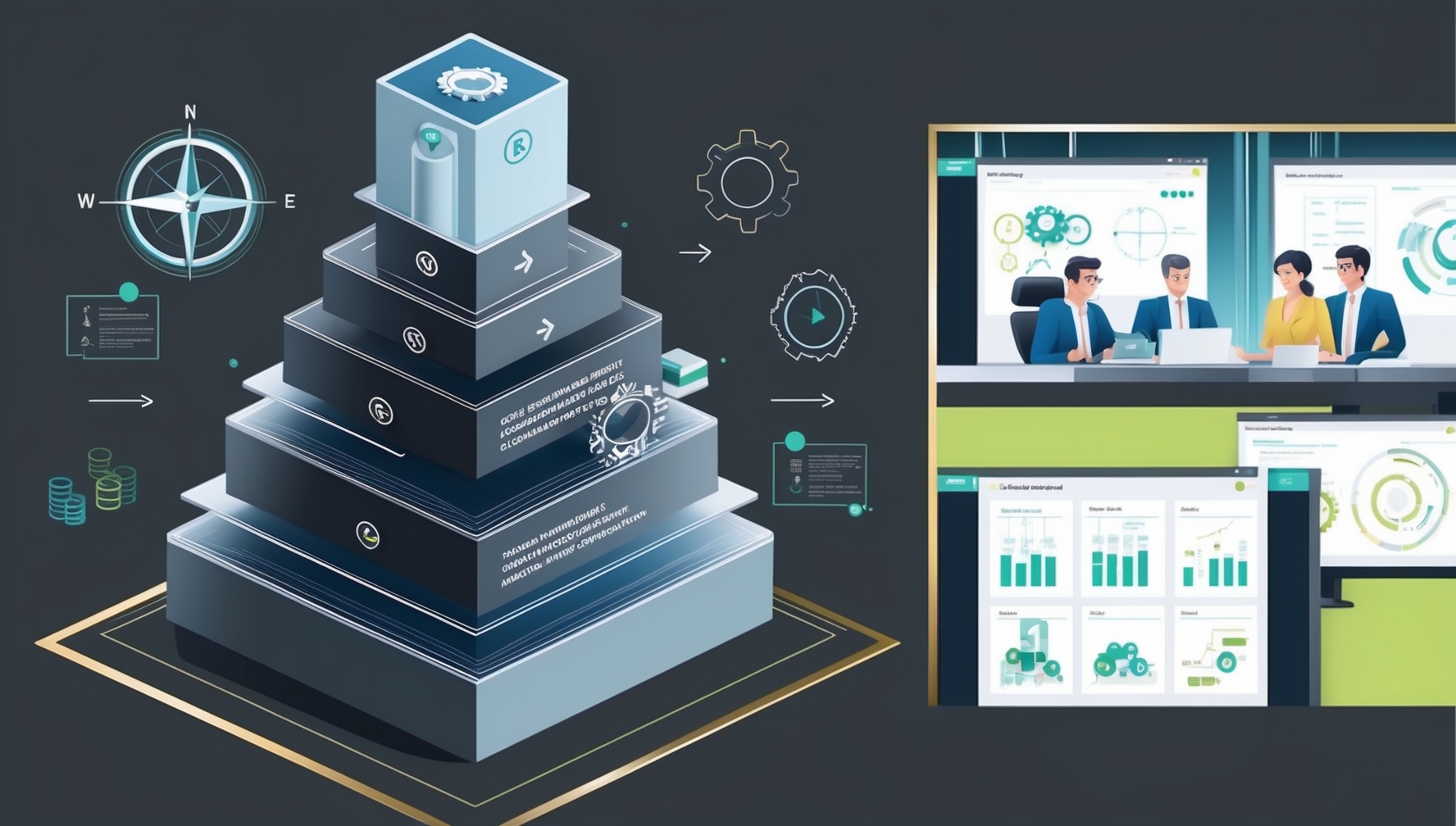This in-depth case study provides a step-by-step guide to implementing enterprise architecture using the TOGAF enterprise architecture framework. This EA example can be used as a sample or template to create an enterprise architecture for your organization to understand the enterprise architecture implementation process and key deliverables.
The role of Enterprise Architecture (EA) is crucial to orchestrating complex business structures and facilitating organizational agility. However, many enterprises struggle to implement an effective EA, primarily due to a lack of understanding of the implementation process and the intricacies of frameworks like TOGAF. This detailed case study provides a solution by presenting a comprehensive step-by-step guide on implementing EA using the TOGAF framework.
This TOGAF implementation case study initially establishes the necessity of aligning the EA vision and mission with the overarching enterprise goals. Then, it thoroughly explores TOGAF - its definition, steps, and capabilities - as the framework for establishing the EA. The TOGAF case study further delves into the business justification for an EA program, detailing its purpose, charter, and necessary communication steps.
Recognizing the importance of stakeholder management, this case study on implementing TOGAF elaborates on key methods to engage and manage diverse stakeholders effectively throughout the EA implementation process. It further explains the different components or layers of an EA, such as Business Architecture, Data Architecture, Process Architecture, and more. Each layer is dissected to understand its contribution to a comprehensive EA.
The TOGAF implementation case study also includes an EA roadmap and a thorough gap analysis, crucial for planning the implementation journey and identifying areas that require attention. It also guides project evaluation, business justification, and gaining necessary approvals.
Finally, the TOGAF implementation case study discusses the process of EA migration planning, prioritization, and establishing a comprehensive migration plan. Recognizing that EA is not a one-time project but an ongoing effort, the case study culminates with a discussion on EA governance, which is essential for maintaining and evolving the EA over time.
This TOGAF implementation case study is a valuable sample or template for organizations planning to implement or improve their EA. It demystifies the EA implementation process, provides a roadmap for success, and prepares IT professionals for the challenges they may face in their EA journey.
The learnings from this case study on implementing TOGAF can be invaluable to a CIO, providing them with practical, real-world strategies to successfully implement or enhance their organization's Enterprise Architecture (EA) using the TOGAF framework.
- Developing an EA Vision: CIOs can understand how to create an EA vision that aligns with the overall business objectives of their organization, ensuring that all technical and business efforts contribute to a shared goal.
- Implementing TOGAF: The step-by-step TOGAF deployment guidance can assist CIOs in utilizing the framework within their organizations, breaking down the implementation process into understandable and manageable stages.
- Stakeholder Management: CIOs often need to manage a variety of stakeholders with diverse interests. The real-world TOGAF EAF case study can help formulate strategies to keep stakeholders engaged and handle their expectations effectively during the EA implementation process.
- Understanding EA Components: By comprehending different EA layers, CIOs can identify how each element fits within their organization's context, leading to more informed decision-making about which components to prioritize for development or transformation.
- Planning EA Roadmap: CIOs can learn how to develop an EA roadmap, identifying key milestones and deliverables. This provides a clear path for the organization's digital transformation journey.
- Conducting Gap Analysis: The TOGAF rollout case study provides an EA gap analysis approach, a critical step that allows CIOs to identify where their current state falls short of their desired future state. This can lead to more targeted and effective improvement initiatives.
- Migration Planning: By learning how to prioritize and plan for the migration of various systems and processes, CIOs can ensure a smoother transition with less disruption to the business.
- Governance: Understanding how to establish robust EA governance can help CIOs maintain and continually evolve their EA in line with changing business needs and technology trends.
By applying the learnings from this case study on TOGAF deployment, CIOs can navigate the complex task of implementing or enhancing their organization's EA, ensuring it aligns with business goals, optimizes operations, and fosters innovation.

